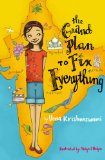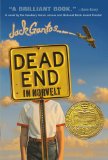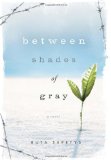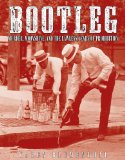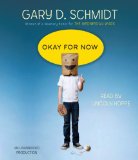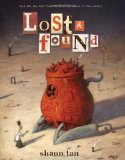Time for another Sonderling Sunday, where I use Der Orden der Seltsamen Sonderlinge, the German Translation of The Order of Odd-Fish, by James Kennedy, as a bizarre German-English phrasebook. It’s also where I use some surprising and delightful German translations to open my eyes to a completely different way of looking at something. It’s also where I learn some German words that are terribly fun to say.
This week, I’m beginning Chapter Two.
The Order of Odd-Fish: pages 13-26
Der Orden der Seltsamer Sonderlinge: Seite 21-38
Let’s begin with the first paragraph:
“There was something ridiculous about the ruby palace by day. It looked tired, not exuberant; its concrete walls were cracked, its paint faded and stained. The debris of last night’s party lay strewn about in the harsh daylight — ripped streamers, broken champagne glasses, burnt-out torches, and some guy’s underwear floating in the pool.”
Auf Deutsch:
“Tagsüber wirkte der Rubinpalast ein bisschen lächerlich. Er sah eher morbide aus, nicht strahlend; die Betonwände waren rissig, die Farbe verblasst und schmutzig. Das helle Tageslicht beleuchtete den Müll der gestrigen Party, zerrissene Wimpel, zerbrochene Champagner gläser, ausgebrannte Fackeln und irgendjemandes Unterwäsche, die im Pool trieb.”
Some notable translations:
“ridiculous” = “lächerlich” (“laughly,” or, more properly, “laughable”)
“tired” = “morbide” (That’s not the translation I learned to say I’m tired!)
“exuberant” = “strahlend”
“cracked” = “rissig” which you can see is the same root as in:
“ripped streamers” = “zerrissene Wimpel”
“burnt-out torches” = “ausgebrannte Fackeln”
“underwear” = “Unterwäsche” (“Underlaundry” Is that because Germans wash more than we do or just a more polite way to talk about it?)
Later on the page, we’ve got a choice sentence:
“Her little bed, plastic table, and scattered clothes were dwarfed inside the vast sparkling gaudiness, as if lost in a giant jeweled egg.”
“Ihr kleines Bett, der Plastiktisch und die überall verstreute Kleidung wirkten in dieser riesigen funkelnden Buntheit winzig, wie verloren in einem gigantischen juwelengeschmückten Ei.”
Here we have
“scattered” = “verstreute”
“dwarfed” = “wirkten. . . winzig”
“sparkling gaudiness” = “funkelnden Buntheit” (I think “Buntheit” is color-ness)
But the greatest word here?
“jeweled” = “juwelengeschmückten” (I think this means something like decorated with jewels.)
Another paragraph:
“Who was Colonel Korsakov? Jo went to the bathroom, splashed cold water on her face, and squinted at herself in the mirror. In the morning light, she found it hard to believe Korsakov really existed. Still, she could hear him grunting and shifting upstairs; it made her uneasy, as if there were a wild rhinoceros in the house.”
This becomes:
“Wer war Oberst Korsakov? Jo ging ins Bad, spritzte sich kaltes Wasser ins Gesicht und musterte sich kritisch im Spiegel. Bei Tageslicht betrachtet, konnte sie kaum glauben, dass der Russe tatsächlich existierte. Trotzdem konnte sie hören, wie er sich oben stöhnend herumwälzte; sie verspürte Unbehagen, so als wäre ein wildes Nashorn im Haus.”
“splashed” = “spritzte” (We’ve borrowed that one, it’s so good.)
“squinted at herself” = “musterte sich kritisch” (I think that’s something like “looked at herself critically”)
“made uneasy” = “verspürte Unbehagen”
And the really good one?
“rhinoceros” = “Nashorn” (“nose horn”)
Interesting. Further down, the translation of “Jo padded out of the bathroom” is “Jo ging auf nackten Fü?en aus dem Bad.” I believe the literal translation of that would be “Jo went on naked feet out of the bathroom.” That pretty much describes “padding,” don’t you think?
This is a bit more awkward in German: “fumbling with an antique shoebox-sized remote control” becomes “fummelte ungeschickt mit einer antiken Fernbedienung herum, die die Grö?e einer Schuhschachtel hatte.”
“remote control” = “Fernbedienung,” which I think is roughly “far service.”
And then, the moment we’ve all been waiting for: The introduction of the Belgian Prankster!
Here he is on TV:
“Aunt Lily clicked the remote and the television slowly came to life. A goggled man in furs was rampaging around the streets of Copenhagen on a dogsled, chasing screaming Danes. ‘The Belgian Prankster!’ said Aunt Lily, and her eyes glazed.”
“Tante Lily drückte auf die Fernbedienung und das Fernsehgerät erwachte langsam zum Leben. Ein Mann mit einer grünen Skibrille und einem Pelzmantel fegte mit einem Hundeschlitten durch die Stra?en von Kopenhagen und hetzte schreiende Dänen vor sich her. ‘Der Belgische Scherzkeks!’ Tante Lilys Augen glänzten.”
Yes, the Belgian Prankster is “der Belgische Scherzkeks.” Remember how last week I said “joke” = “Scherz.” This is basically “joke cookie.”
I also find it interesting that “goggled man” is translated “Mann mit einer grünen Skibrille.” That would be “man with green ski glasses.” Okay, but why are they green?
“Dogsled” is “Hundeschlitten,” which is a good one.
The next paragraph is also interesting:
“Jo lag im Sarkophag, hatte die Augen geschlossen und versuchte, das Gequatsche des Belgischen Scherzkekses auszublenden. Sie sollte in einer Stunde auf ihrer Arbeitsstelle sein, allerdings war noch etwas Zeit, sich nach der erschöpfend kurzen Nacht zu entspannen. Das innere des Mumiensarges war mit schwarzen Samtkissen ausgekleidet und überraschend gemütlich. Als sie jetzt darin lag, fühlte sie sich auf angenehme Weise tot.”
That is translated from:
“Jo lay in the sarcophagus, her eyes closed, and tried to block out the yammering of the Belgian Prankster. She was expected at work in an hour, but there was still some time to relax after her exhausting late night. The inside of the mummy’s coffin, lined with black velvet cushions, was surprisingly comfortable. Lying in it, she felt pleasantly dead.”
I like these ones:
“yammering” = “Gequatsche”
“block out” = “auszublenden” (like she’s trying to get those noises to blend with the background)
“exhausting” = “erschöpfend”
“relax” = “entspannen”
“surprisingly comfortable” = “überraschend gemütlich”
Now, the German translation says nothing about fish in this paragraph:
“Jo frowned. ‘It also said something about fish . . . have you ever heard of that? The Order of Odd-Fish?'”
“Jo runzelte die Stirn. ‘Au?erdem stand etwas von Sonderlingen darauf . . . Hast du schon mal etwas davon gehörrt? Von diesem Orden der Seltsamen Sonderlinge?'”
And “frowned” becomes basically “wrinkled her forehead” — “runzelte die Stirn.”
Here’s a nice rhyming phrase:
“Sie sa?en beide stumm in dem bröckelnden Glanz des Ballsaals, und obwohl Jo in der Hitze schwitzte, fröstelte sie.”
That’s from: “Jo and Aunt Lily sat silently in the crumbling ballroom’s gloom, and even though Jo was sweating in the heat, she shivered.”
Okay, looking closer, it doesn’t quite rhyme, but I still love that “sweating in the heat” becomes “in der Hitze schwitzte.” It’s also a lovely tongue twister to pull out this summer. Another good one is “shivered” = “fröstelte.”
One more sentence:
“The Belgian Prankster was pouring tons of cottage cheese down the streets of Copenhagen, burying his fleeing victims; the audience roared with delight.”
“Der Belgische Scherzkeks kippte Tonnen von Hüttenkäse in die Stra?en von Kopenhagen und begrub seine flüchtenden Opfer darunter. Die Zuschauer brüllten vor Entzücken.”
I like that “cottage cheese” = “Hüttenkäse,” which means, basically, “cottage cheese.”
“begrub” = “burying” (Graben means “grave,” so this is be-graving someone.)
“fleeing victims” = “flüchtenden Opfer”
“audience” = “Zuschauer”
“roared with delight” = “brüllten vor Entzücken.”
Okay, that’s enough for today. I got up to page 25 in German, and page 16 in English.
Today I think my favorite phrase was “in der Hitze schwitzte.”
Tune in next week, when we continue with Chapter Two!
